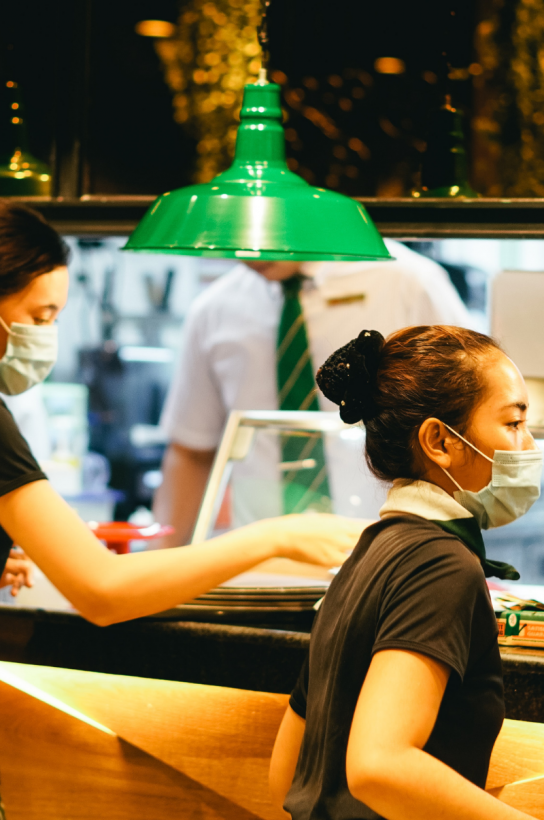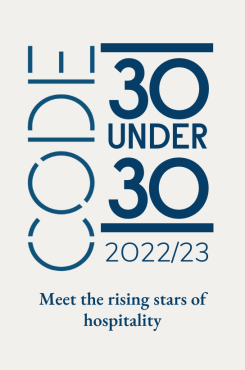In his weekly column, CODE founder Adam Hyman considers the communication challenges that come with the new normal and the unwelcome presence of tech in restaurants.
“I’m sorry, I didn’t quite catch that?” Another muffled reply comes from behind the Perspex screen.
Scenes like this must play out in shops and cafes across the country every day. There have been lots of challenges since the arrival of this pesky virus in our lives, but a daily one that surely has to change is the way we now communicate when ordering an oat flat white or grabbing a takeaway salad and fresh juice for lunch.
Before hospitality reopened on 4 July there were all sorts of different interpretations of what restaurants, pubs and cafes would look like. Diners enclosed in air-tight pods, servers in hazmat suits and all sorts of weird and wonderful ways to minimalise human interaction. Yet close to four months on, we’ve seen that actually venues can be COVID-secure without looking like a nuclear test site. Some sensible precautions in place and the weekly Public Health data shows hospitality is responsible for less than 3% of transmissions.
However, despite the continued battering we get from Government with 10pm curfews and the Tier 2 regulations and their impact on hospitality, we’re going to have to find ways to live this with virus in everyday scenarios. The Perspex screens were clearly a short-term solution for something that we thought was going to perhaps be less of an issue in our lives. Now that it’s become compulsory for us all to wear masks in everyday situations – how are we going to find a way to make it work?
From a style point of view, I’m not a fan of those welder-style masks but when it comes to customer facing roles they’re a vast improvement to a normal face mask. You can see someone’s facial expression, their smile and you can actually hear what people are saying. Not least you can actually recognise someone. Covering half of someone’s face certainly keeps even the most diligent of maitre d’s on their toes. If these new ways of living are indeed here to stay for the foreseeable future, do we not need to seek out better ways of interacting with customers?
I worry that the tech companies are gleefully rubbing their hands because the more this drags on the more they’re going to win in the game of humans versus tech. We’ve already seen QR codes replace the traditional menu (how this is any more hygenic I don’t know because people touch the piece of paper the QR code is on just as they would the menu?) but this has more implications than just saving trees.
The whole way a server now interacts with their table has changed. Guests with menus in front of them makes it clear they’ve already been welcomed by their server and menus that are booklets – when closed – usually signals that a table is ready to order. Now we all sit on our iPhones scanning food and drink menus – and the amount of times you have to rescan because you’re flipping between different menus. It has certainly changed the way we now start our meal.
I’ve always been worried that there’s been a risk of proper hospitality being replaced by tech because it saves a business money and it reduces the risk of human error. But at a time when we’re all craving human interaction more than ever because it’s been taken away by Government, rather than rely on tech we need to find ways to make it work in hospitality settings. A warm welcome and a smile goes a long way – we just need to find a way to do so in a safe way in these trying times.



